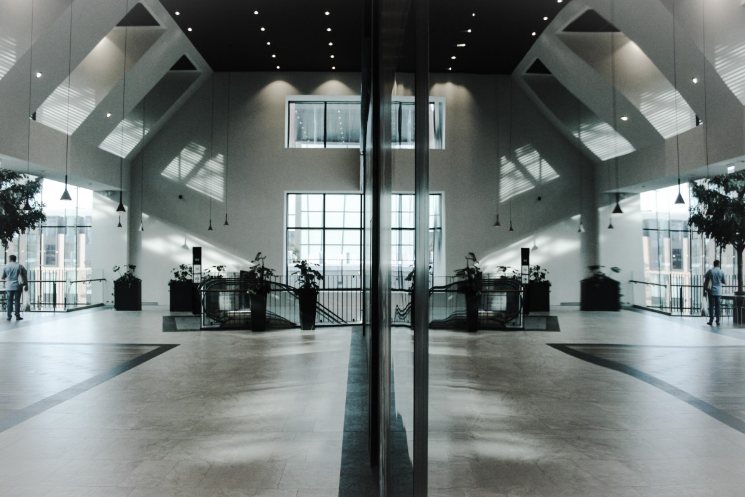
Is Commercial Air Filtration A Viable Way To Fight Air Pollution?
True commercial high efficiency filters will capture airborne particles down to 0.3 microns in size. But not all high efficiency filters are built the same way.
The growing demand for high efficiency air filtration systems comes alongside an increased focus on the health dangers of air pollution. Organizations such as the World Health Organization and the U.S. Environmental Protection Agency have repeatedly warned the public against the hazards of air pollution and its effects on the young, the elderly, and those with existing health conditions.
Air pollution can be especially problematic for seniors, many of whom have tried to live a healthier lifestyle by spending more time doing outdoor activities such as walks around the neighborhood, tai chi and yoga in the park, or simply walking the dog around the block.
True enough, the health benefits of walking and engaging in outdoor activities for the elderly are well-documented and include:
- Improved lung and heart function
- Reduced risk of stroke and heart disease
- Improved management of high cholesterol, diabetes, hypertension, and joint and muscle pain
- Stronger bones and improved balance
However, a recent study published in The Lancet, suggests that poor air quality in major cities might negate these benefits.
The researchers conducted an experiment where they asked 119 people over the age of 60 to spend time walking outdoors. Some were told to walk on a busy street in downtown London while the others did their walking in the park. Some of the seniors were in good health while others had manageable symptoms of Chronic Obstructive Pulmonary Disease (COPD) or heart disease.
Upon examination, the research team found that while those who had walked in the park enjoyed lower blood pressure and improved arterial flexibility, those who had walked downtown experienced far less observable health benefits. The researchers traced the difference to high levels of nitrogen dioxide and fine particulate matter from diesel vehicles traveling in downtown London.
Of course, one can always say that people can simply exercise indoors. However, this ignores the fact that outdoor air pollution also increases air pollution indoors.
How Does Outdoor Air Pollution Affect Indoor Air Quality (IAQ)?
While the pollutants affecting IAQ mainly come from inefficient combustion from cooking, heating, and lighting, outdoor contaminants can also exacerbate the problem.
In highly ventilated spaces, for example, outside air containing contaminants from car exhaust, fumes from power plants, and allergens can combine with dust, particulate matter, and volatile organic compounds (VOCs) already present indoors to create an environment with poor air quality.
While sealing the building (i.e., keeping doors and windows closed at all times) may sound like a common-sense solution to the problem, outside air can still enter a building through cracks in the walls, ceilings, and floors. Furthermore, heating, ventilation, and air-conditioning (HVAC) units vent out indoor air and draw in fresh outdoor air, defeating the purpose of sealing the building altogether.
Commercial High Efficiency Air Filters and Sealed Buildings
But sealing the building also introduces another problem—one that requires the use of commercial high efficiency air filters.
“During the 1970s, the global use of energy became an important political and economic topic due to the energy crisis that took place during that decade,” notes Camfil USA’s Charlie Seyffer, Manager of Marketing & Technical Materials for commercial air filters and 37-year ASHRAE member and active committee participant. “Many buildings were retrofitted with insulation, vapor barriers and new, tighter windows and doors. As a result, the buildup of contaminants and moisture inside buildings that had previously provided a healthy environment became an issue.”
Enter High Efficiency Air Filtration Systems
High efficiency air filtration systems are a common solution used to protect a building’s occupants and equipment from contaminants found in indoor air. High-efficiency filters prevent the buildup of indoor air contaminants and moisture, preventing the air indoors from becoming unhealthy.
According to the United States Environmental Protection Agency (EPA), this environment may cause Sick Building Syndrome—an illness with symptoms that include migraines, nasal irritations, respiratory illness, and fatigue.
How High Efficiency Air Filters Work
High efficiency air filters are used to force air through a fine filter media, trapping and removing particles such as pollen, dust mites and tobacco smoke in the process. Industrial filters are usually attached to existing HVAC equipment, where they trap the airborne particles disturbed by the vent system. The finer the filter media, the more particles it can trap and remove from the air.
Choosing Commercial High Efficiency Filters
True commercial high efficiency filters will capture airborne particles down to 0.3 microns in size. But not all high efficiency filters are built the same way, which means that some systems will be better than others. It’s also important to remember that these filtration systems only work for indoor environments.
If you would like more information about our Camfil high efficiency air filters and how they improve your indoor air quality, get in touch with your nearest Camfil USA location.
Lynne Laake
Camfil USA Air Filters
T: 888.599.6620
T: Follow Camfil USA on Twitter
Y: Watch Camfil Videos on YouTube